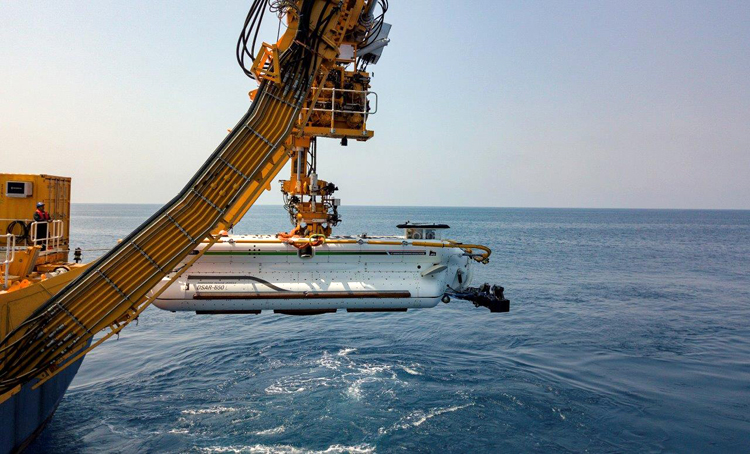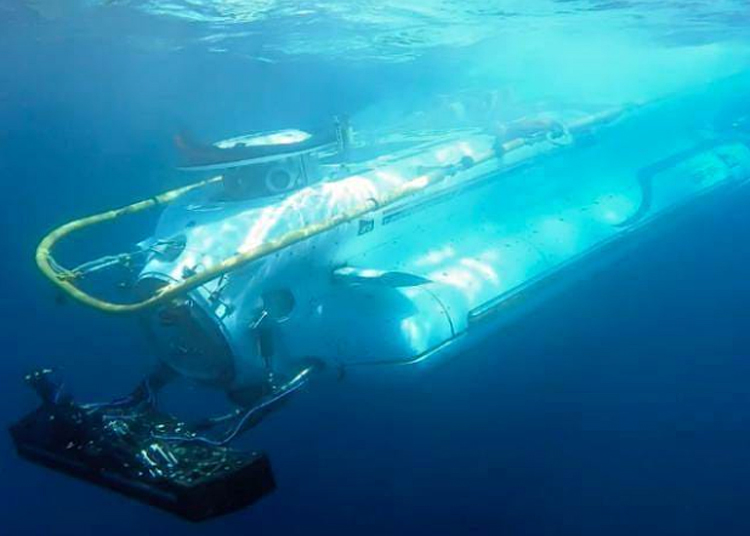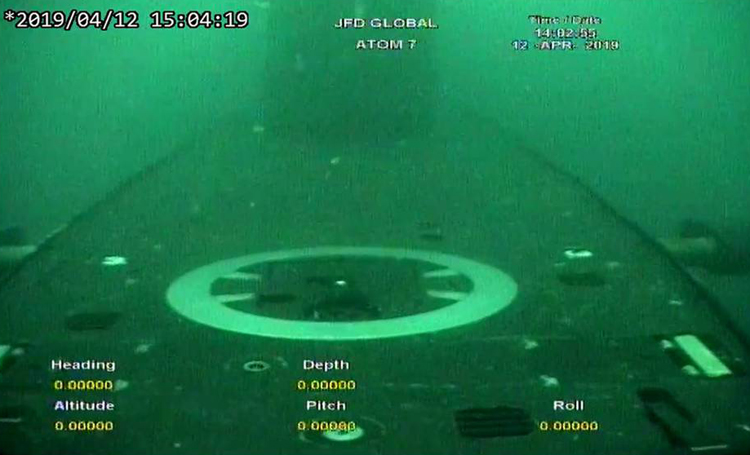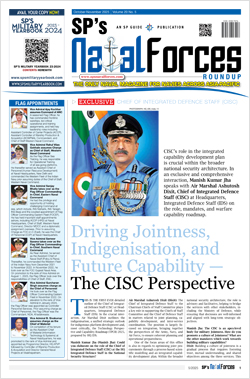INDIAN ARMED FORCES CHIEFS ON OUR RELENTLESS AND FOCUSED PUBLISHING EFFORTS

The insightful articles, inspiring narrations and analytical perspectives presented by the Editorial Team, establish an alluring connect with the reader. My compliments and best wishes to SP Guide Publications.

"Over the past 60 years, the growth of SP Guide Publications has mirrored the rising stature of Indian Navy. Its well-researched and informative magazines on Defence and Aerospace sector have served to shape an educated opinion of our military personnel, policy makers and the public alike. I wish SP's Publication team continued success, fair winds and following seas in all future endeavour!"

Since, its inception in 1964, SP Guide Publications has consistently demonstrated commitment to high-quality journalism in the aerospace and defence sectors, earning a well-deserved reputation as Asia's largest media house in this domain. I wish SP Guide Publications continued success in its pursuit of excellence.
- Global Partners Urged to Tap India's Shipbuilding Potential: Rajnath Singh at Samudra Utkarsh
- All about HAMMER Smart Precision Guided Weapon in India — “BEL-Safran Collaboration”
- India, Germany deepen defence ties as High Defence Committee charts ambitious plan
- G20 Summit: A Sign of Global Fracture
- True strategic autonomy will come only when our code is as indigenous as our hardware: Rajnath Singh
- India‚ÄďIsrael Joint Working Group Meeting on defence cooperation to boost technology sharing and co-development
Indian Navy demonstrates submarine rescue capability off Eastern seaboard
Newly-acquired DSRV mates with Kilo class submarine in a simulated distress scenario at the bottom of the sea, brings 30 'trapped' submariners to the surface safely

The Indian Navy on June 2 demonstrated a submarine rescue capability with a recently acquired Deep Submergence Rescue Vessel (DSRV).
The newly constituted Submarine Rescue Unit on the Eastern Seaboard successfully lowered the DSRV to the bottom of the sea off Vizag for a mating exercise with a Kilo class submarine, INS Sindhudhvaj, which simulated a submarine in distress at an estimated depth of about 100 metres.
After mating with the hatch of the INS Sindhudhvaj, about 30 personnel from the submarine were successfully transferred on to the DSRV and safely surfaced thereafter to validate this new capability.
Two DSRVs were inducted by the Indian Navy into Submarine Rescue Units based in Mumbai and Vizag in December 2018 and April 2019 respectively. These were acquired from UK's James Fisher Defence for an estimated £193 Million.
The crane with which the DSRV was lowered was mounted on a privately-owned "opportunity ship" which was available for the validation exercise. A similar capability demonstration has also reportedly been done off India's Western seaboard.

"The entire evolution was done by the Indian crew and marks the culmination of the training phase on the East Coast," the Indian Navy spokesperson declared on Twitter on June 5, terming the new capability as "historic". India is the first country in the Indian Ocean Region (IOR) to acquire this capability, and only the seventh after the P5 countries and Japan. Earlier, it was dependent upon the US for rescue of is submariners through a special arrangement between the two countries.
While the Indian Navy spokesperson did not reveal the depth at which the submariners' rescue was simulated in the Bay of Bengal, this DSRV during trials is known to have dived up to 666 metres, which is a record for the deepest submergence by a 'manned vehicle' in Indian waters. The Remotely-operated Vessel (ROV) with this DSRV was tested at 750 metres, and the detection sonar at a depth of 650 m. These were all firsts for the Indian Navy.
"The submarine hatches on which the mating was carried out has been certified by the IN Submarine Designer i.e. DND (SDG). This is also a skill that has been newly acquired by the Indian Navy. The live mating exercise is a historic achievement towards DSRV integration into the Indian Navy and would pave the way for the Indian Navy to emerge as a Submarine Rescue Provider in the IOR," the spokesperson added.

Two DSRVs were inducted by the Indian Navy into Submarine Rescue Units based in Mumbai and Vizag in December 2018 and April 2019 respectively. These were acquired from UK's James Fisher Defence for an estimated £193 Million.
The entire evolution done by Indian crew, marks the culmination of the training phase. This newly acquired skill by #IndianNavy & live mating Ex is a historic achievement towards DSRV integration into the IN & would pave way for IN to emerge as a Submarine Rescue Provider in IOR. pic.twitter.com/7bOFfW0TjJ
— SpokespersonNavy (@indiannavy) June 5, 2019
While the Indian Navy spokesperson did not reveal the depth at which the submariners' rescue was simulated in the Bay of Bengal, this DSRV during trials is known to have dived up to 666 metres, which is a record for the deepest submergence by a 'manned vehicle' in Indian waters. The Remotely-operated Vessel (ROV) with this DSRV was tested at 750 metres, and the detection sonar at a depth of 650 m. These were all firsts for the Indian Navy.
The DSRV can rescue up to 14 persons in one dive. Its side scan sonar is used to locate the submarine in distress. It latches on or 'mates' with the entrance hatch of the submarine for the transfer of the personnel from a distressed submarine. Its ROV is capable of posting emergency life support containers to the stricken vessel.
The contract with James Fisher Defence also includes launch and recovery systems (LARS) equipment, Transfer Under Pressure Systems, logistics and support equipment, and a 25-year all-inclusive maintenance of the DSRVs.





